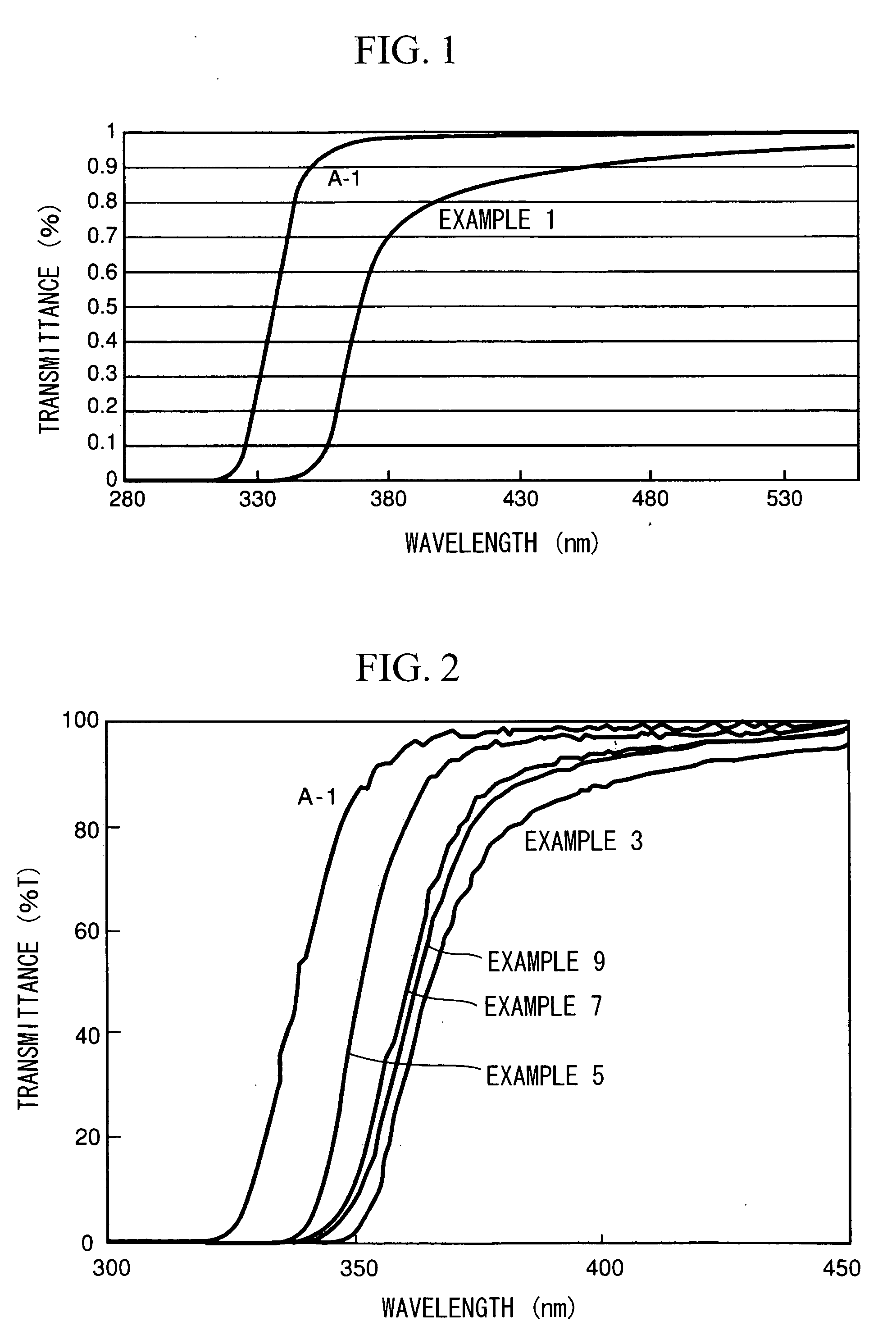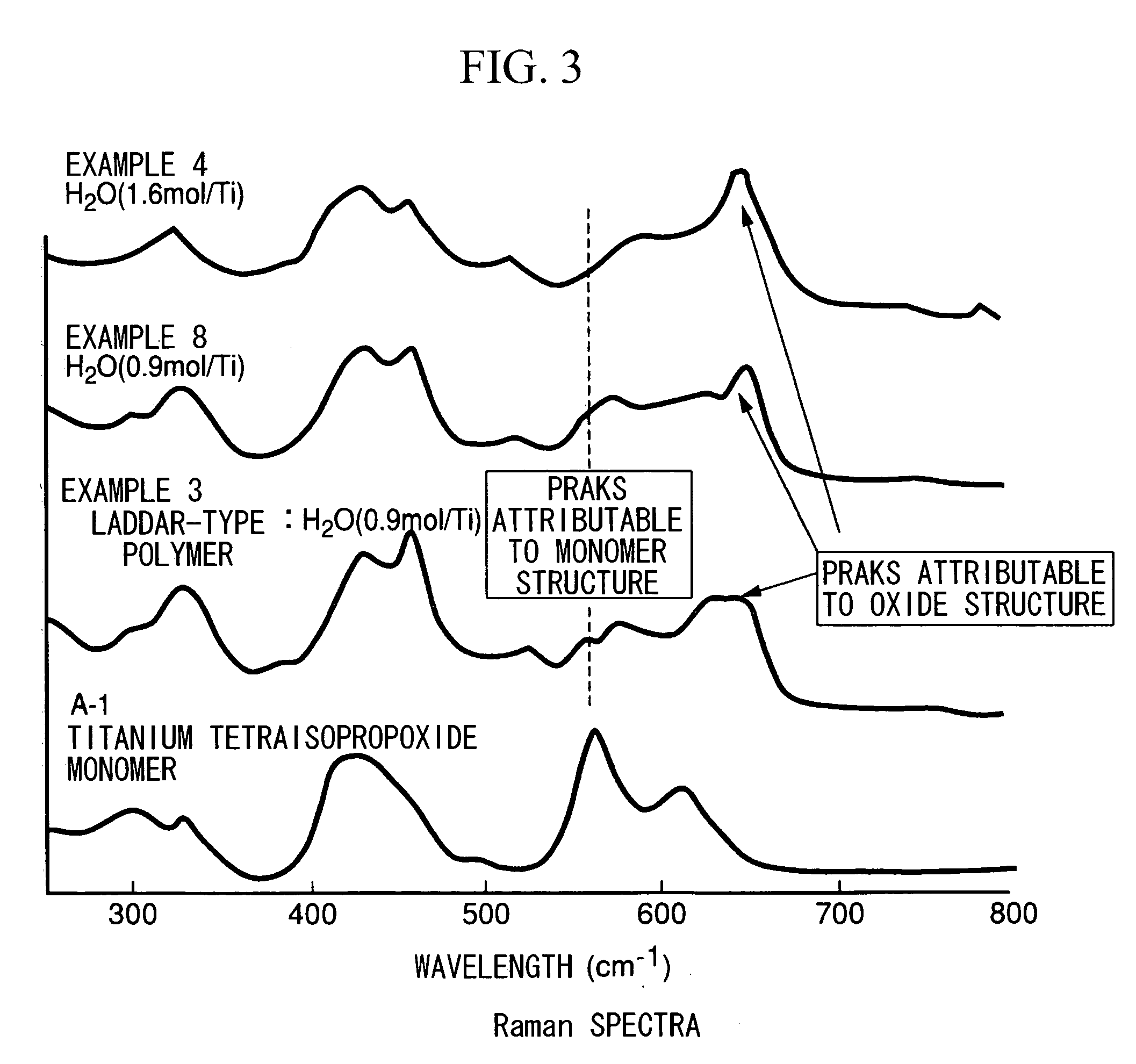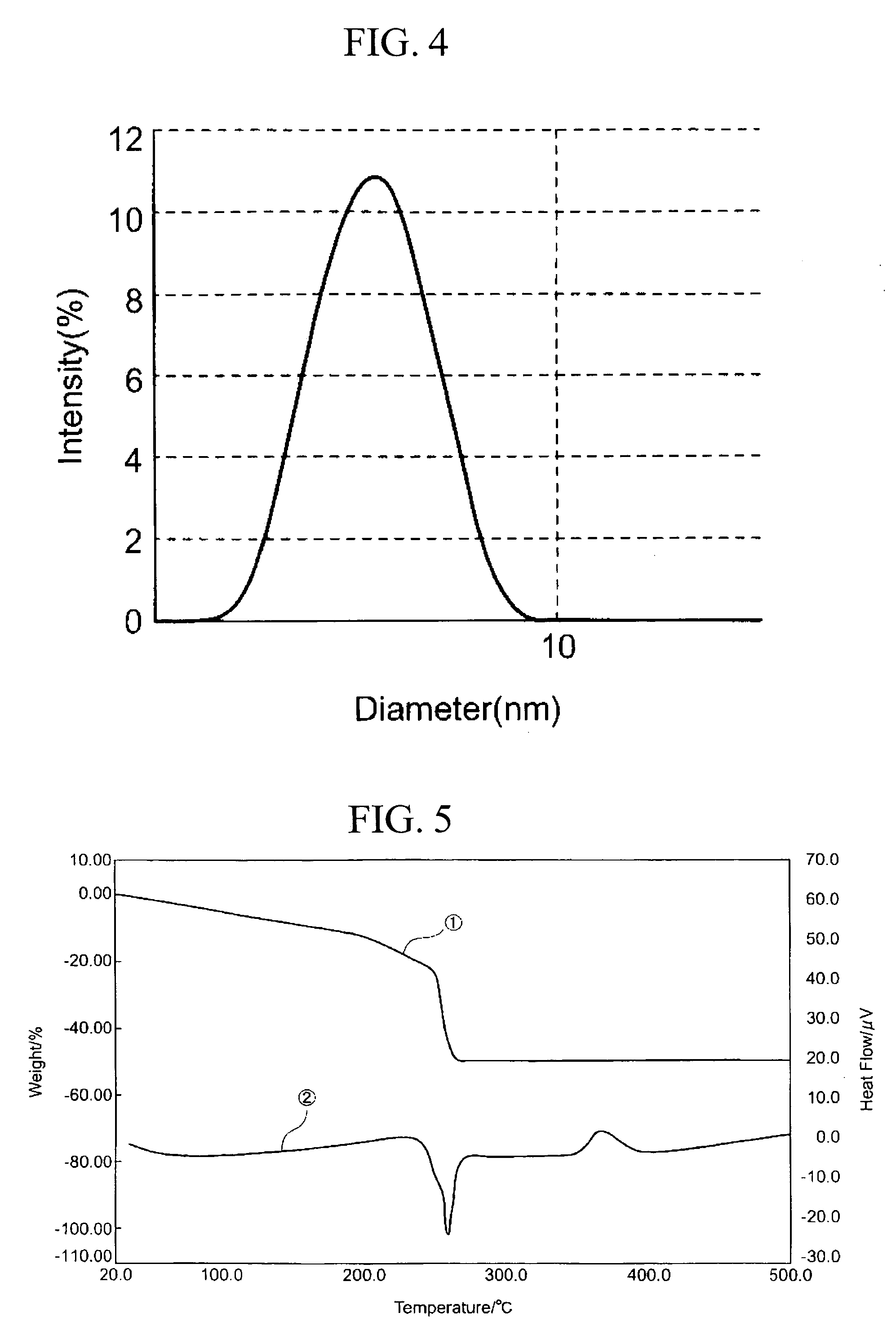Dispersoid having metal-oxygen bonds, metal oxide film, and monomolecular film
- Summary
- Abstract
- Description
- Claims
- Application Information
AI Technical Summary
Benefits of technology
Problems solved by technology
Method used
Image
Examples
example 1
[0199] First, 7.87 g (27.7 mmol) of titanium tetraisopropoxide (A-1, produced by Nippon Soda Co., Ltd.; 99.9% purity; titanium oxide equivalent concentration, 28 wt %) was dissolved in tetrahydrofuran within a four-neck flask. The flask was flushed with nitrogen, then cooled in a dry ice-containing methanol bath (approx. —74° C.). After about 20 minutes of cooling, 0.8 g (44.4 mmol) of distilled water diluted with tetrahydrofuran was added under stirring. The total weight of the tetrahydrofuran solution at this time was 32.12 g. The amount of water added at this time, expressed as a molar ratio with the titanium, was H2O / Ti=1.6. The system was then gradually returned to room temperature, yielding a clear, light yellow tetrahydrofuran solution of titanium isopropoxide hydrolysate. The appearance at this time of the tetrahydrofuran solution obtained is indicated in Table 1. This solution had a visible light transmittance (550 nm) of 87%.
[0200] The UV properties of the solution prepar...
example 2
[0203] The tetrahydrofuran solution obtained in Example 1 was vacuum concentrated with a rotary evaporator at a bath temperature of 50° C., giving a clear, light yellow viscous liquid having a titanium oxide equivalent concentration of 40.2 wt %. When tetrahydrofuran solvent was added to this liquid, it re-dissolved.
TABLE 1(Distilled water) / Appearance(TitaniumTiO2 equivalentat timeAppearancetetraisopropoxide)concentrationof waterof sol(molar ratio)(wt %)mixtureobtainedEX 11.65.4clear,clear,light yellowlight yellowEX 21.640.2—clear,light yellowCE 12.05.4clear,cloudy gellight yellowCE 22.45.4clear,cloudy gellight yellow
example 3
[0204] First, 12.4 g of titanium tetraisopropoxide (A-1, produced by Nippon Soda Co., Ltd.; 99% purity; titanium oxide equivalent concentration, 28.2 wt %) was dissolved in 45.0 g of toluene within a four-neck flask. The flask was flushed with nitrogen, then cooled to −80° C. in an ethanol / liquid nitrogen bath. In a separate procedure, 1.26 g of ion-exchanged water (molar ratio H2O / Ti=1.6) was mixed into 11.3 g of isopropanol, following which the mixture was cooled to −80 to −70° C. and added dropwise in this cooled state to the four-neck flask under stirring, thereby carrying out hydrolysis. During dropwise addition, the liquid temperature within the flask was maintained at −80 to −70° C. After the end of dropwise addition, mixing was continued for 30 minutes under cooling, then the temperature was raised to room temperature under stirring and hydrolysis was carried out, yielding a clear, colorless sol having a titanium oxide equivalent concentration of 5 wt %. The appearance at th...
PUM
| Property | Measurement | Unit |
|---|---|---|
| Temperature | aaaaa | aaaaa |
| Temperature | aaaaa | aaaaa |
| Temperature | aaaaa | aaaaa |
Abstract
Description
Claims
Application Information
 Login to View More
Login to View More - R&D
- Intellectual Property
- Life Sciences
- Materials
- Tech Scout
- Unparalleled Data Quality
- Higher Quality Content
- 60% Fewer Hallucinations
Browse by: Latest US Patents, China's latest patents, Technical Efficacy Thesaurus, Application Domain, Technology Topic, Popular Technical Reports.
© 2025 PatSnap. All rights reserved.Legal|Privacy policy|Modern Slavery Act Transparency Statement|Sitemap|About US| Contact US: help@patsnap.com



